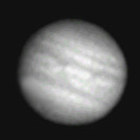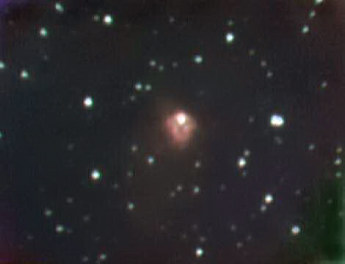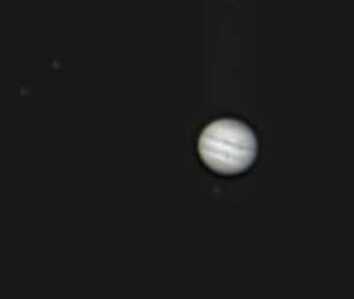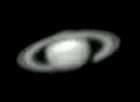
|
Nova in M31 Discovery image South up and East to the right. Exposure time : 3 X 4 minutes 0.61m f/3.8 MX516 Date : 31.Oct 2000 Time : 21.10 UT. Odd Trondal |
|
Jupiter. Exposure time : 0.1 seconds Date : 24 Jan 2000 Pixcell 255 CCD and 0.21m f/20. Torbjørn Fredriksen |

|
|
Saturn. Exposure time : 0.1 seconds Date : 24 Jan 2000 Pixcell 255 CCD and 0.21m f/20. Torbjørn Fredriksen |

|

|
IC 1470 in Cepheus?. Only the center is visible. Distance ? ly. Field : 7' X 5' Exposure time : 6 minutes ( In each color ). 0.61m f/3.9 MX5_16 CCD Date : 17. October 1999 Time : 21.00 UT. Odd Trondal |

|
Comet C/1999 H1 ( Lee ). Distance from Sun : 276 mill km. Mag. : 9.5 Integration time : 8 X 1 min. MX5_16 and 0.61m f/3.9 telescope. Date : 14. October 1999 Time : 22:41 UT Odd Trondal |
|
Comet C/1999 S4 ( LINEAR ). ( Round dot at right. ) Distance from Sun : 615 mill km. Mag. : 15.8 Size : 4" Integration time : 6 X 6 min. MX5_16 and 0.61m f/3.9 telescope. Date : 15. October 1999 Time : 03:44 UT Odd Trondal |

|
|
NGC 891 in Andromeda. Size : 12' x 1' Distance : 45 mill ly. Integration time : 15 min. ST-7 and 10" SC f/4.8 telescope. Date : 13. September 1999 Alf Jacob Nilsen |

|

|
Io's shadow and Callisto just south of Jupiter. ( South up ) Europa and Ganymede to the lower right. Exposure time : 0.03 seconds Date : 12 September 1999 Time : 23.57 UT. 61 cm f/3.25 MX5 CCD Odd Trondal |
|
Europa's shadow. ( South up ) Exposure time : 0.3 seconds Date : 23 August 1999 Time : 02.17 UT. 25 cm f/20 ST-4 CCD Odd Trondal |

|

|
Saturn. Exposure time : 0.3 seconds Date : 23 August 1999 Time : 02.38 UT. 25 cm f/20 ST-4 CCD Odd trondal |
|
M 27 in Vulpecula. Magnitude central * : 13.5 Size : 8' x 5' Distance : 900 ly. Integration time : 6 min in each RGB. MX5_16 CCD and 0.61m f/3.2 telescope. Date : 31. August 1999 Time ( UT ) : 21.35 ( North up, East left. ) Odd Trondal |

|
|
NGC 2841. Date : 6. May 1999 Time ( UT ) : 21.30 Measured magnitude : 13.6 Integration time : 4 x 15 seconds. Pixcell 255 CCD and 0.21m f/4.7 telescope. Field : 12' x 12' ( North up, East left. ) Torbjørn Fredriksen |

|
|
Pluto to the left middle. R.A. 16h 40m 15s Dec. -10 11' 30" Ophiuchus Date : 29.April 1999 Time : 01:12 Integration time : 2 x 20 seconds. ST-4 CCD and 0.61m f/2.2 telescope. Field : 7' x 7' ( North upper right, East upper left. ) Odd Trondal |

|

|
Pluto in center of picture. R.A. 16h 40m 06s Dec. -10 11' 28" Date : 1.May 1999 Time : 00:52 Integration time : 2 x 25 seconds. ST-4 CCD and 0.61m f/2.2 telescope. Field : 7' x 7' ( North is up, East left. ) |




